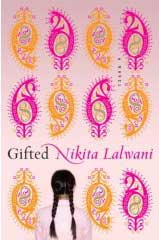Most people in the west know little about Malaysia, and indeed, even in India, it’s really by and large Tamil communities that have a strong historical connection to the country (see Wikipedia here); the Indian diaspora in Malaysia is, by and large, a Tamil diaspora. Given the recent tensions and the general interest in different South Asian diasporic experiences, a novel like Preeta Samarasan’s Evening is the Whole Day will likely be of interest to many readers.
*
Evening is the Whole Day is a strong first novel, chewy with language and rich with intricate attention to detail. The book is structured as a series of out-of-sequence chapters, which do provisionally move the story forward even as the novel’s “present” skips back and forth – like that Christopher Nolan movie whose title I can no longer remember.
The story centers around a Tamil family in the Malaysian city of Ipoh, circa 1980, and the real emotional core of Evening is the Whole Day is a contrast between two young women along class lines. Uma Rajasekharan struggles to survive her teenage years in a dysfunctional family (a badgering, snobbish grandmother, a largely absent father with a dark secret, and a resentful, often cruel mother), but finally escapes, relatively unscathed, to attend college in New York. (I’m not giving anything away, incidentally; the first chapter of the novel is set a week after Uma’s departure.) By contrast, the servant girl, Chellam, is forced to bear the weight of the collective madness of her master, mistress, their respective children, and the master’s wayward brother (known memorably in the book as “Ballroom Uncle”). Chellam is in every sense ruined, first by her nuclear family (her father is a drunk), and then by her damaged employers. Meanwhile the children in the Rajasekharan family are able to continue to live their lives without directly confronting the shame and hypocrisy that should be their parents’ legacy.
There are, admittedly, limitations to Evening is the Whole Day. The style and the wordplay may strike some readers as too similar to Arundhati Roy’s style in The God of Small Things, though I personally wasn’t bothered by this. Actually, I think there are merits to building intensity and drama into the sprawling, challenging idiolect Samarasan uses – every sort of word is in here, including a number of Malay and Tamil phrases included without a glossary (most can be understood from context, though a few could not; people who know some Tamil might see things in this novel that I missed.). At the same time, I think there are considerable merits to rather different approaches, like Jhumpa Lahiri’s minimalism. (I recently read Lahiri’s new book, Unaccustomed Earth, and thought some of the stories were magnificent.)
What was more bothersome to me was the somewhat narrow focus on the internal drama of a single, affluent family. After a glorious first two paragraphs at the opening of the novel, my heart sank a little once Samarasan settled on a relatively static locale (the "Big House"). Though Samarasan is hardly inattentive to the divide between rich and poor in her book, I expected to hear more about the plantation-working Tamils of Malaysia, who, as I understand it, make up the majority of the Indian population in the country -– and who are generally far from affluent. Instead, all but two of the main characters are born into wealth (the exceptions being the mother, Vasanthi, and the servant, Chellam).
There is a back-story offered, showing how the Rajasekharan family came to be so prosperous while so many of their expatriate countrymen remained dirt-poor, but the origins of the wealth are to a great extent taken for granted by the younger members of the family. Finally, non-Indian Malaysians (specifically people who are ethnically Chinese and Malay) are also surprisingly few in number –- though perhaps that simply reflects the cultural and linguistic enclosures of Malaysian life. (If so, it’s too bad; it’s tragic to think that whole communities in such a diverse society could have remained nearly completely isolated from one another for so long.)
Perhaps in future novels, if she’s inclined to stay with Malaysia as a location (she’s lived in the U.S., but now lives in France – she might find inspiration elsewhere), Samarasan can take us further into the broader world of Malaysian life.
Having said that, several chapters in the middle of the novel do work though some of the ethnic and political upheavals in Malaysian society, starting in the late 1960s, and these were the chapters I tended to find most gripping.
Here is a dialogue between Appa (Raju Rajasekharan), who was born into wealth, and attended Oxford before returning to Malaysia to practice law, and Amma (Vasanthi), who comes from a lower-middle class Tamil family in the city of Ipoh. Amma doesn’t have much education, or understanding of the fragility of the political environment for Indian Malaysians:
[Appa] “The problem with their racial politics,” he began, “is that—“
[Amma] “Aiyo, all this politics I don’t know lah,” she said. “Whatever they want to do as long as they leave us alone it’s okay isn’t it?”
“Leave us alone? Leave us alone? You call this leaving us alone? Their bloody article 153 and their ketuanan Melayu, yes yes I know you’ll insist you can’t understand a word of Malay, so let me explain it to you, let me tell you what it means: it means Malays are masters of this land, do you understand? Our masters! With that kind of language—“
“Tsk, after all it’s their country, what, so why shouldn’t they be the masters? Just because you cannot sit at home and keep quiet means—“
“But it’s our country just as much as the bloody Malays’! Do you realize some of our families have been here longer than theirs? Ask the Straits Chinese—“
“Tsk, all these grand ideas…”
Grand ideas. The sin of which he’d always stood accused, by Lily and Nlini and Claudine, by others before and after them. The difference was that Amma’s own ideas really did stop there. Her very thoughts trailed off into nothingness, not just her sentences. (99)
It’s interesting for Amma to say, “all this politics I don’t know lah,” given that she’s a character who doesn’t know any Malay. (The Indians from poorer backgrounds are less engaged with the broader Malaysian culture or the Malay language, while the more affluent Indians are acutely aware of the dangers of that isolation.)
Again, though there are a few chapters that engage with politics along these lines, this isn’t truly a political novel. Tunku Abdul Rahman’s and Lee Kuan Yew’s names appear only once each (and you have to be looking). Here is another passage, with Amma and her eldest daughter Uma, traveling by rail on the brink of the ethnic/political riots of 1969:
For now he, a Malay man seated across the aisle and behind Uma and Amma, concentrated on correcting certain misperceptions. “Eh thanggachi!” he called out softly, leaning sideways in his seat, his teeth yellow under the black velvet of his songkok. “Thanggachi!”
Thanggachi meant little sister in Tamil, but Uma, six years old, in stockings and a smocked dress with a sash, knew two things without having to think about them: 1) the Malay man didn’t really speak Tamil; and 2) she wasn’t anyone’s little sister.
“I’m not thanggachi,” she said, and, by way of honest-but-friendly introduction: “I’m Uma Rajasekharan.” Only implied, but keenly felt by all present: And who are you, audacious songkok wearer with yellow teeth?
“Tsk,” said Amma, one hand flicking Uma’s knee, “don’t be rude.” She shut her eyes against the green glare streaming through the curtains and leaned against the headrest.
“Oh oh, so sorry lah thanggachi,” said the Malay man,” but I tell you something, okay?”
[…] “Keretapi Tanah Melayu mean railway lah thanggachi,” the man went on. “Meas Malay Land Railway.” Malay Lands means Malaysia lah, thanggachi, that also you don’t know ah? Looking at me with eyes so big, your own country also you don’t know the name is it? Aiyo-yo thanggachi, your own Na-tio-nal Language also tak tahu ke? No shame ah you, living in Malay Land but cannot speak Malay? Your mummy and daddy also no shame ah, living in Malay Land and never teach their children Malay?” (116)
If you find dialogues like these interesting (they are, I should say again, not fully representative), you’ll probably enjoy Evening is the Whole Day.

